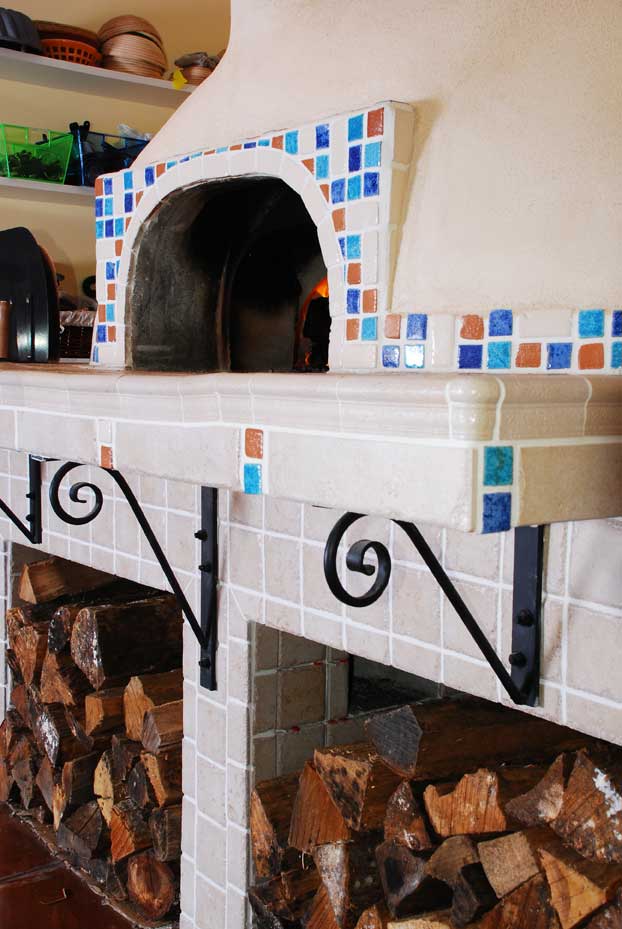Michael’s Law: “No matter where you are, when working with flour,
you’re always downwind.
~ Michael Jubinsky, Stone Turtle Baking & Cooking School
I wiped my brow as I read the recipe for classic French bread. I’ll admit, I was a little nervous I would be the only one in the class to make a mistake. I think Michael may have sensed my uneasiness, because he made multiple trips around the table to check in on my progress. He had prepared the Poolish (a French pre-ferment for rustic country style breads) the night before. My classmates and I were responsible for making the dough, combining the Poolish, spring water, unbleached all-purpose flour, salt and instant dissolving yeast. A combination that promised to deliver a flavorful French bread with a chewy center, crispy crust and lovely holes throughout.
Measuring has always made me nervous. It’s so exact, you either succeed or you don’t. There’s no grey area.
My mother is not much of a baker, but is an amazing cook. She’s the type that throws in a little of this, with a little of that and the food she creates without a single measuring cup is unforgettable. Her cookbooks just collect dust on the shelves. Growing up, I developed a similar technique, and never looked back.
Recently, however, I’ve started exploring the art of bread baking, as well as making raw milk cheese. The margin for error with both baking and cheese making is so vast. The variables you need to consider are seemingly endless – temperature, humidity, the time of year, the environment you’re in, never mind following the often difficult recipes themselves. These all need to be taken into consideration when making such delicate, finicky, artisan foods.
Anyway, in terms of bread baking if you go with the “a little of this and a little of that” approach, you’ll end up with nothing else but a big mess to clean up. So you can imagine what I looked like trying to measure exactly 1 3/4 cups of water. Picture this: I pour¦ dribble, dribble¦ ahhh too much¦. pour some water back¦dribble dribble, ahhh I poured too much again! Fifteen minutes later I was going cross-eyed from staring at the measuring cup lines and decided it was time to move on.
During the process of adding flour, I somehow managed to get it all over me. Michael and his wife Sandy watched (I’m sure in amusement) all of us carefully measuring and pouring the flour into our stainless steel bowls. Michael, again sensing our self-consciousness, cracked a joke that I’ll never forget. He said something along the lines of “when you’re working with flour, no matter where you are or what you’re making, you’ll always be downwind.” At that point, I couldn’t help but laugh at myself. Despite the fact I just stirred with such force that flour went flying across the table, I took a deep breath and realized I was really beginning to have a good time.
The next step¦ kneading the sticky, delinquent dough. We kneaded, flipped, and kneaded over and over until the blob of dough started looking a little like a loaf. I was amazed at how easy Michael made it look. It was like all those times I watched my older sister dance to New Kids on the Block as a kid. She was born with rhythm, and I thought I had it too until I tried to mimic her moves. I just ended up looking clumsy and confused – much like the way I looked trying to knead this dough. Eventually, we were all able to make sense of it, and proudly placed our creations on the proofing rack.
While we let the dough rise, we took a break and made our own wood fired pizzas for lunch. I’ve had the luxury of enjoying many wood fired pizzas over the past year here at Maine Wood Heat, but I was looking forward to the experience all the same.
We shaped our dough, threw on whatever toppings we wanted, and let the Jubinsky’s Le Panyol oven do the rest of the work. Each pizza that came out looked and tasted incredible. A few tips I took away from lunch were to go light on the sauce, use a generous amount of Semolina (it acts like little wheels that roll your pizza right off the peel and onto the hearth) and throw some fresh basil on top of your pizza immediately after you take it out of the oven. Perfecto.
The rest of the afternoon we learned how to shape the bread dough, and how to etch our signature cuts on the top of each loaf, and then waited eagerly around the oven. Like little kids, we ask Michael and Sandy, is it ready yet? What about now? Can we look at it? Just a peek? What does the timer say? How many minutes left?
The anticipation was brutal.
Finally, what had felt like an eternity (aka 16 minutes) later, we were holding our warm, lightly browned loaves of bread in our hands. They were a beautiful sight.
The entire day flew by.
We reluctantly said our goodbyes and I embarked on the 2 1/2 hour trip home. The sun was shining, my windows were down, and the smell of artisan French bread accompanied me the entire ride.




